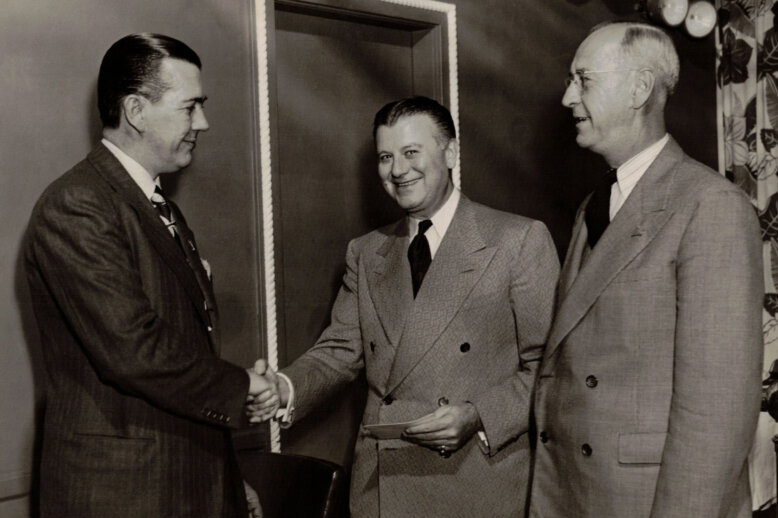Era: New Boston(~1950-1995)
Urban renewal, the taking, Government Center, Charles River Park, highways, bussing
Mickey Redstone Mickey Redstone was the father of Sumner Redstone and a media conglomerate. He started his career in entertainment owning nightclubs before rising to prominence as the head of a national theatre exhibition company. Redstone was raised in the West End by immigrant parents and his early Boston experiences helped fuel the canny business…
South Enders vs. The B.R.A.: Urban Renewal in Boston’s South End In post-war Boston, city officials razed several low-income neighborhoods for urban renewal. Among those neighborhoods was the South End, a low-income yet culturally rich area. The story of community resistance to urban renewal in the South End included small victories. But the South End…
The Catholic Church and the Destruction of Boston’s West End The Catholic Church was more than a religious institution in 20th century Boston. It was a land holder as well as a facilitator and participant in urban renewal. The Church’s role raises questions on accountability and how powerful institutions can abandon the people who put…
Destruction and Disappointment: The Legacy of Boston’s Central Artery Boston’s Central Artery promised relief to the city’s traffic dilemma, but as with most major building projects of the mid-20th century, it brought demolition, displacement, and ultimately disappointment. Less than 20 years after the first automobiles hit the dirt roads of Boston, traffic congestion had become…
Boston’s Rat Day of 1917: When the West End Joined a Citywide Rodent War On February 13, 1917, Boston witnessed one of the most unusual civic experiments in its history. The Boston Women’s Municipal League declared war on the city’s rodent population, organizing the first—and as it turned out, only—Rat Day. While this peculiar event…
Boston’s urban landscape has been dramatically shaped by urban renewal initiatives of the mid-20th century. Among the most notable examples are the West End and Charlestown—two historic neighborhoods with starkly divergent urban renewal results. While the West End became the poster child for urban renewal’s destructive potential, Charlestown had a very different outcome only a few years later. This article examines these contrasting urban renewal experiences, highlighting their implementation approaches, community responses, and lasting impacts on Boston’s urban fabric.
Charles Street Jail stands as a landmark of major national significance, both as a key example of the Boston Granite Style of architecture and as the embodiment of mid-nineteenth-century penal reform movements. The jail’s history was marked by dramatic shifts: initially celebrated as an architectural and reformist triumph at its opening in 1851; later decried for its “cruel and unusual” conditions in the 20th century, prompting its closure; before being reinvented as a luxury hotel in the 21st century.
The story of urban renewal in the West End is a complex one, marked by both ambitious plans and challenging realities when it comes to affordable housing. Over the past seventy years, the West End has served as a cautionary tale, full of broken promises and ongoing struggles for income-restricted housing. More recent efforts, such as the affordable housing initiative that is part of the redevelopment of the West End branch of the Boston Public Library, look to address this past.









